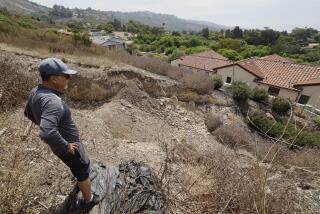Report Warns of Need for More Power Plants
California’s power grid successfully weathered an extraordinary test in late July and early August as high temperatures brought record usage, but blackouts could loom in 1999 and beyond if electricity plants are not built, a new report cautioned.
However, California’s competitive electricity market already has lured investors planning power plants that would generate more than 7,000 megawatts of energy, and this could bless the state with plenty of electricity, according to an alternative view of the energy future outlined in the same report.
The result of the gloomiest forecast might be extremely high electricity prices and rolling blackouts, while the rosiest picture portrays competitively low prices and a smoothly operating power grid, according to the report prepared by the California Energy Commission for the California Independent System Operator, the nonprofit corporation that began running the state’s electricity transmission system March 31.
The transmission reliability report, which will be presented to the state Legislature by Sept. 1, was required by AB 1890, the 1996 law that restructured California’s electricity industry and allowed customers of investor-owned utilities to buy their electricity from any registered marketer.
The report presents five scenarios of the future: The brightest foresees new plant construction that is adequate to meet growing demand; the worst anticipates retirement of obsolete plants and little new construction so that demand outstrips supply by as early as next year.
Daniel Nix, deputy director of the California Energy Commission, said the worst-case scenario is, “we hope, a self-unfulfilling prophecy. Information about the fact that California may have problems with its power supply may encourage developers to build power plants and ensure that there will be adequate supplies.”
Before deregulation, utilities owned California’s power plants and electricity transmission grid, and the California Public Utilities Commission ensured that adequate electricity capacity existed. With the restructuring of the industry, the utilities were required to divest their power plants.
Most of the plants sold so far have fetched high prices, and several power plant developers have presented or intend to present projects to the California Energy Commission for the mandated review.
All this activity “makes me feel a lot better than I did six months ago” when the report was being drafted, said Armando Perez, director of grid planning for the California ISO.
“There’s no assurance that these plants will be built,” Perez said, but he added, “I think the state picture is beginning to look pretty nice.”
The unusually high temperatures in July and early August throughout California and in neighboring states “truly tested the system,” Nix said. Californians set an electricity record, with peak demand hitting 44,927 megawatts of energy at 4:11 p.m. Aug. 3.
The California ISO was twice forced to declare a “stage two” emergency, in which utilities are allowed to interrupt power to commercial and industrial customers that have selected that option in exchange for lower rates. During a “stage three” emergency, which has never been declared, the state’s electricity reserves drop below 1.5% and rolling blackouts begin.
“The fact that we have come through that so well is a testament to the operations people at the California Independent System Operator and the smoothly functioning Power Exchange,” where electricity is traded, Nix said.
More to Read
Inside the business of entertainment
The Wide Shot brings you news, analysis and insights on everything from streaming wars to production — and what it all means for the future.
You may occasionally receive promotional content from the Los Angeles Times.










